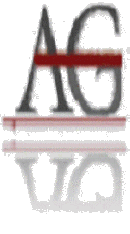|
 Site
Search and Site Map
Site
Search and Site Map
Table of Contents
 

Getting Organized: Politics
and Geography
Humans have been organizing and structuring themselves from the beginning. Geographers are interested in such structuring because it is an expression of the human organization of space and is closely related to other spatial evidences of culture, such as religion, language and ethnicity.
Political Geography is the study of the organization and distribution of political phenomena, including their impact on other spatial components of society and culture.
Political geography is
concerned with the study of both the spatially uneven outcomes of political processes
and the ways in which political processes are themselves affected by spatial
structures. Conventionally political geography adopts a three-scale structure
for the purposes of analysis with the study of the
state at
the center, above this is the study of international
relations (or geopolitics),
and below it is the study of localities. The primary concerns of the
sub-discipline can be summarized as the inter-relationships between people,
state and territory.
Political geography has extended the scope of traditional political science
approaches by acknowledging that the exercise of power is not restricted to
states and bureaucracies, but is part of everyday life. This has resulted in the
concerns of political geography increasingly overlapping with those of other
human geography sub-disciplines such as economic geography, and, particularly,
with those of social and cultural geography in relation to the study of the
politics of place. Modern political geography often considers:
how and why states are organized into regional groupings, both formally
(e.g. the European Union) and
informally (e.g. the Third World)
the relationship between states and former colonies, and how these are
propagated over time, for example through neo-colonialism
the relationship between a government and
its people
the relationships between states including international trades and treaties
the functions, demarcations and policing of boundaries
how imagined geographies have
political implications
the influence of political power on geographical space
how communications (telephone, radio, TV, Internet, social networks) have
political implications
the study of election results (electoral geography)

Definitions
For
now we will define
state on the international level as an independent political unit occupying a defined, permanently populated territory and having full sovereign control over its internal and foreign affairs.
In contrast a
nation is a cultural concept defining a group of people with a common culture occupying a particular territory, bound together by a strong sense of unity arising from shared beliefs and customs.
The composite term
nation-state properly refers to a state whose territorial extent coincides with that occupied by a distinct nation or people. There are very few 100% nation-states.
Iceland
Denmark
Poland
Japan
A multi-nation state (or multinational state)
is one that contains more than one nation … the opposite of a nation-state.
Canada
Cyprus
A part-nation state occurs when a nation is dispersed across and is predominant in two or more states.
Arab Nation
A stateless nation is a people without state …
The world is populated by more than 1,600 stateless nations, most of which are in one way or another engaged in national movements. The classic instance of a stateless nation has been the Jewish people who for long centuries suffered for lack of a homeland until 1948. Other examples include
many indigenous peoples that have been maneuvered into minority status in their home countries by colonial powers
the gypsy / Roma people of Europe
the Palestinians
the Basques
the Kurds: numbering an estimated 20 million, are commonly seen as the world's largest nation without a state.
About 10 million are in Turkey, 4 million in Iraq, 5 million in Iran and a million in Syria.
There may be another million in the former Soviet Union.
About 400,000 of the 1.8 million guest workers from Turkey living in Germany are of Kurdish origin.
The Modern State
The earliest forms of the state emerged once it became possible to centralize power in a durable way. Agriculture and writing are almost everywhere associated with this process. Agriculture allowed for the production and storing of a surplus, which in turn allowed and encouraged the emergence of a class of people who controlled and protected the agricultural stores and thus did not have to spend most of their time providing for their own subsistence. Writing made possible the centralization of vital information.
The story of the development of the specifically modern state begins with the dissolution of the western Roman
Empire. This led to the fragmentation of the imperial state into the hands of private and decentralized lords whose political, judicial and military roles corresponded to the organization of economic production. In place of the fragmented system of feudal rule, with its often indistinct territorial claims,
large unitary states with extensive control over definite territories emerged. This process gave rise to the highly centralized and increasingly bureaucratic forms of absolute monarchical rule of the 17th and 18th centuries, when the principal features of the contemporary state system took form, including the introduction of a standing army, a central taxation system, diplomatic relations with permanent embassies, and the development of state economic policy — mercantilism.
The Peace of Westphalia ended both the Thirty Years' War in Germany and the Eighty Years' War between Spain and the Netherlands. The treaties involved the Holy Roman Emperor, the Kingdoms of Spain, France and Sweden, the Dutch Republic and their respective allies among the princes of the Holy Roman Empire. The Peace of Westphalia resulted from the first modern diplomatic congress and initiated a new order in central Europe based on the concept of
state sovereignty. Sovereignty is the exclusive right to control a government, a country and a people.
The now universal idea of the modern state was developed by European political philosophers in the 18th century which advanced the concept that people owe their allegiance to a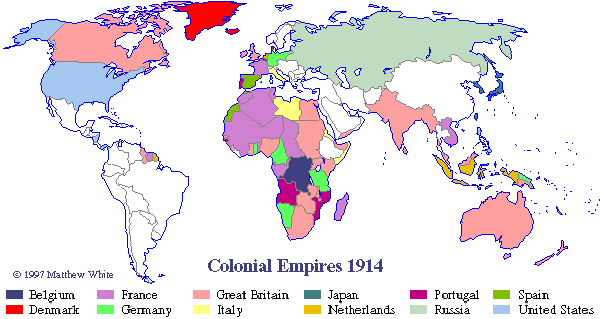 state and the people it represents rather than its leader or king. The new concept coincided in France with the French Revolution and spread throughout Western Europe to England, Spain and Germany. state and the people it represents rather than its leader or king. The new concept coincided in France with the French Revolution and spread throughout Western Europe to England, Spain and Germany.
This idea of state was passed on to much of Africa, Asia and the Americas during the European expansion in the 17th, 18th and 19th centuries. Indigenous people had their own organized used of space, but the borders were drawn for the convenience of the Europeans who ignored the existing cultures and political structure. As many of these former colonies have gained political independence, they have maintained the idea of state and the borders established by the Europeans.
The idea of separate statehood grew slowly at first. In 1800 there were 35 countries in the world. By 1939 there were 70 countries. After World War II, the end of the colonial era brought a rapid increase in the number of sovereign states. At present there are over 200 sovereign states.
Political Resources
on the Net
The Law of the Sea
Are we really prisoners of geography?


Geographic Aspects
Size, shape and location have great effect on the power and stability of states. Keep in mind that some states are bigger than others but resources are not evenly distributed.
Size
In general, the larger the state, the better the chance that there will be enough resources to support the state, but Canada, Russia and Australia are large states with relatively small areas capable of supporting agriculture.
Size can also hinder the effective control of a state’s people and/or resources.
Shape
Like size, shape can affect the well-being of a state by fostering or hindering effective organization.

Compact states: states that are roughly circular in shape … the distance from the center to any point on the boundary exhibits little variation … Cambodia, Poland, Zimbabwe
and Uruguay are examples.

Prorupt states: nearly compact but possess one or sometimes two narrow extensions of territory. Proruption may simply reflect peninsular elongations of land area, such as with Thailand. In other instances, the extensions have an economic or strategic significance - securing access to resources or water routes. Namibia strip was designed by the Germans to give access to the Zambezi River.

Elongated states: a state whose territory is decidedly long
and narrow; its length is at least six times greater than its average width. the least efficient shape administratively is represented by countries like Vietnam, Norway or Chile which are long and narrow. Parts of the country far from the capital are likely to be isolated. These countries are likely to encompass more diversity of climate, resources and people.

Fragmented states: countries composed entirely of islands (Philippines, Indonesia), countries partly on islands
and partly on mainland (Italy and Malaysia) and countries that are chiefly on the mainland, but whose territory is separated by another state (US). Pakistan was once a fragmented country until 1971 when the eastern part broke away and became Bangladesh.

Perforated
states: state whose territory completely surrounds the territory of another
state so that it has a hole in it. South Africa (Lesotho) and Italy (San
Marino and Vatican City) are examples.
Boundaries
The whole world, even Antarctica, is divided up and claimed by countries.
Natural boundaries: those based on recognizable physical features, such as mountains, rivers or lakes. Even though these natural boundaries seem like a good idea, in practice there are problems.
Artificial boundaries: alternative to natural boundaries … geometric boundaries
Antecedent boundary: one drawn before an area is well populated and prior to the cultural landscape features, such as the 49th parallel separating the US and Canada.
Subsequent boundaries: boundaries drawn after the development of the cultural landscape … There are two types of subsequent boundaries.
Consequent boundary: which is a border drawn to accommodate existing cultural differences … Northern Ireland and Ireland
Superimposed boundary: a boundary imposed on an area by a conquering or colonizing power that is unconcerned about pre-existing cultural patterns … Africa, Yugoslavia, Afghanistan
Relict boundary: a former boundary line that once had meaning but no longer functions as such, usually marked by landscape features (forts, castles). The abandoned castles dotting the frontier zone between Wales and England constitute a relict boundary.
|
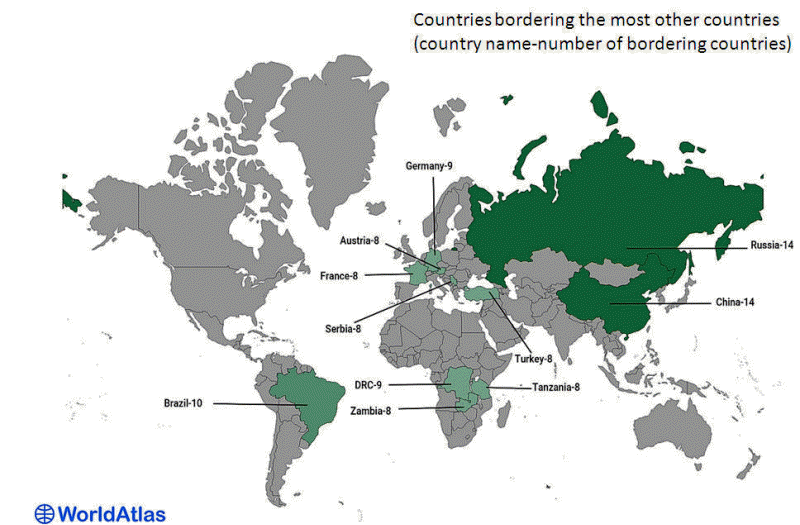 |
|
Despite having the world’s longest land
border at 5,530 miles, and a coastline approximately 151,019 miles
long, Canada ranks low on the list of nations with shared borders,
having only one neighbor - the US. America doubles that, bordering
not only Canada to the north, but also Mexico to the south. While
North American nations have few neighbors, the countries of Africa,
Asia, Europe and South America share international boundaries with
multiple nations. Ecuador and Chile are the only countries on the
South American continent that don't share a border with Brazil.
Nearly landlocked in the center of Africa, the Democratic Republic
of the Congo (DRC) borders ten countries over 6,667 miles. Six
countries share a border with eight other countries, while the top
spot goes to both China and Russia with 14 bordering nations each. |
Boundary Disputes
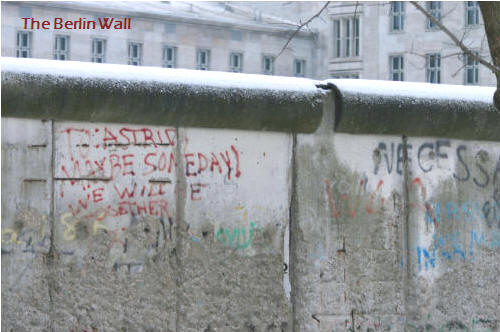 Boundary disputes are constant sources of problems in the world. Since World War II almost one-half of the countries in the world have been involved in some kind of boundary dispute. Boundary disputes are constant sources of problems in the world. Since World War II almost one-half of the countries in the world have been involved in some kind of boundary dispute.
There are four general types of boundary disputes.
Positional disputes occur when states disagree about the interpretation of documents that define a boundary. The boundary between Argentina and Chile was to follow the highest peaks and the watersheds between the east and west flowing rivers. These two things do not always coincide. Argentina and Chile nearly went to war in the late 70’s over this when oil and gas deposits were discovered in the disputed area.
Territorial disputes arise when a superimposed boundary divides an ethnically homogeneous population. Conflicts can arise when one of the states wants to annex part of another state to reunite a group of people. Hitler used this as an excuse to invade Czechoslovakia and Poland to reunite pockets of German minorities residing in these states. Somalia has had border clashes with Ethiopia over Somalis living in that country. Kashmir, a disputed area between India and Pakistan have caused two wars so far.
Resource disputes arise when neighboring states want access to resources from another state. The US has had a dispute with Mexico over water rights from the Colorado River and with Canada over fishing grounds. The Gulf War was also related to this. Iraq helped justify its invasion of Kuwait because of a large oil reserve that mostly lies in Iraq that Kuwait pumps oil from.
Functional disputes arise when neighboring states disagree over policies applied over a boundary. US-Mexican border disputes over drugs and immigration.
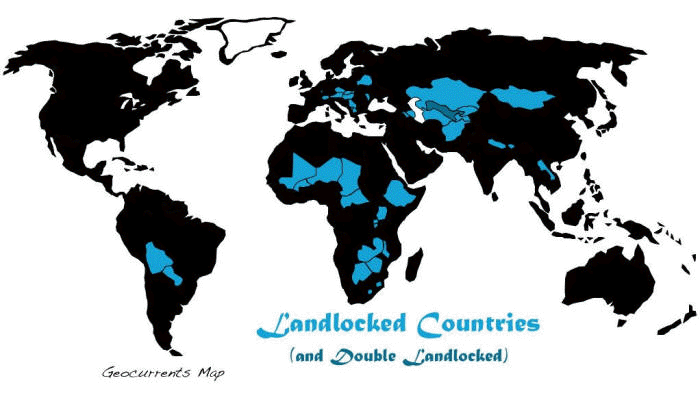


Types
of Governments
Classification of governments can be based on several different variables.
Economy: Who provides the goods and services that are bought, sold and used?
|
Capitalism
(Russia) |
Socialism
(Norway) |
Communism
(Cuba) |
In a capitalist or free-market economy, people own their own businesses
and property and must buy services for private use, such as healthcare. |
Socialist governments own many of the larger industries and provide education, health
and welfare services while allowing citizens some economic choices. |
In a communist country, the government owns all businesses
and farms and provides its people's healthcare, education and welfare. |
Politics:
How is the government run?
|
Dictatorship
(Syria) |
Totalitarian
(China) |
Theocracy
(Iran) |
Monarchy
(Jordan) |
Parliamentary
(Israel) |
Republic
(USA) |
Anarchy
(Afghanistan?) |
|
Rule by a single unelected leader who may use force to keep control. In a military dictatorship, the army is in control. Usually, there is little or no attention to public opinion or individual rights. |
Rule by a single political party.
People forced to do what government tells them and may be prevented from leaving the country. |
A form of government where rulers claim to be ruling on behalf of a set of religious ideas or as direct agents of a deity. |
A monarchy has a king or queen who sometimes has absolute power. Power is passed through the family. |
A parliamentary government is led by representatives of the people. Each is chosen as a member of a political party
and remains in power as long as the party does. |
A republic is led by representatives of the voters. Each is individually chosen for a set period of time. |
Anarchy is a situation where there is no government.
This can happen after a civil war in a country, when a government was destroyed
and rival groups fight to take its place. |
Authority: Who picks the government?
|
Revolutionary
(US, France, USSR etc)
|
Totalitarian
(North Korea)
|
Oligarchy/Plutocracy
(Venezuela) |
Democracy
(India) |
 |
|
The existing government is overthrown by a completely new group. The new group can be very small (such as the military) or very large (as in a popular revolution). After a period of time, the revolutionary government evolves into one of the other types of government (unless there is another coup or uprising).
|
Totalitarian governments are ruled by a single political party.
Votes for alternative candidates
and parties are simply not allowed. Citizens are expected to vote, but only for the government's chosen candidates.
|
A form of government which consists of rule by an elite group who rule in their own interests, especially the accumulation of wealth
and privilege. Only certain members of society have a valid voice in the govt. This can reflect (but is not limited to) economic interests (plutocracy), a particular religion (theocracy) or familial rule (monarchy).
|
In a democracy, the government is elected by the people. Everyone who is eligible to vote - which is a majority of the population - has a chance to have their say in who runs the country.
|
Political Ideology|
 | |
The terms left
and right create essentially an economic line, shown by the horizontal line above. That's fine as far as it goes. Leaders committed to a totally controlled economy go on the hard left. Socialists occupy a less extreme leftist position. Extreme free-market advocates, who advocate no control over the economy belong on the far right.
That deals with economics, but the social dimension is also important in politics. That's the one that the mere left-right scale doesn't adequately address. So the people at
Political Compass added a vertical social line that ranges in positions from extreme authoritarian (the state is more important than the individual) to extreme libertarian (the individual is more important than the state). Both an economic dimension and a social dimension are important factors for a proper political analysis. The chart makes clear that, despite popular perceptions, the opposite of fascism is not communism but anarchism (ie liberal socialism), and that the opposite of communism ( i.e. an entirely state-planned economy) is neo-liberalism (i.e. extreme unregulated economy)
In the Authoritarian Right quadrant (the upper right) we find leaders such as George Bush. US neo-conservatives, with their commitment to high military spending and the global assertion of national values, tend to be more authoritarian than hard right. The lower right (Libertarian Right) quadrant is blank but it's safe to say that this is the domain of the true libertarian, those who value the individual more than the state and who advocate an unregulated economy. Unfortunately, there are not many (if any) leaders who hold those views.
The upper-left (Authoritarian Left) quadrant is where we find those leaders who - either moderately or extremely - advocate the importance of state control of the individual and the economy ... the opposite of the lower right quadrant.
Leaders in the Libertarian Left (lower left) quadrant come along infrequently - although more so than those in the lower right - believing as they do in the importance of the state vis-à-vis the economy but not the individual. |
Remember:
Nearly every country in the world is based on a system that combines 2 or more of the types above. For example, the US is not a true capitalist society since the government actually provides some services for its citizens. Additionally, one person's opinion of the type of government may differ from another's. Many argue that the US is actually a plutocracy rather than a democracy.

Additional Sources of Information
CBBC: Types of Government
How Canadians Govern Themselves
Political Systems Explained
Bureau of African Affairs (AF)
Bureau of East Asian and Pacific Affairs (EAP)
Bureau of European and Eurasian Affairs (EUR)
Bureau of Near Eastern Affairs (NEA)
Bureau of South
and Central Asian Affairs (SCA)
Bureau of Western Hemisphere Affairs (WHA)
Bureau of International Organization Affairs (IO)
The CIA Factbook
CIA's
The World Factbook: Field Listing of Government Type
Different Types of Governments
Janes is a defense and open-source intelligence firm.

Just one in five people now live in countries designated as “free,” down from
nearly one in two in 2005, a new
report from Freedom
House found.


Political Conflict
At any moment in time, a state can be characterized by forces that promote unity and by forces that disrupt unity.
State Cohesiveness
Centripetal Forces
Forces form within a state that unite it … forces that keep a country together.
Memory Hint: centripetal =
pull together
 One of the most powerful centripetal forces is nationalism which is an identification with the state and the acceptance of its national goals. Nationalism is based on the concept of allegiance to a single country, its ideals and way of life. Most countries have more than one culture and in multi-cultural societies, nationalism helps to integrate groups into a unified population. This kind of consensus nationalism has emerged in the US. One of the most powerful centripetal forces is nationalism which is an identification with the state and the acceptance of its national goals. Nationalism is based on the concept of allegiance to a single country, its ideals and way of life. Most countries have more than one culture and in multi-cultural societies, nationalism helps to integrate groups into a unified population. This kind of consensus nationalism has emerged in the US.
Unifying institutions like schools are expected to instill a society’s goals, values and traditions, and to teach a common language.
Organization
and administration is a binding force when there is public confidence in the effective organization of the state.
Good transportation
and communication networks foster political integration by promoting interaction between areas and by joining them economically and socially.
Other Examples: a strong common culture, religion, language, history, a popular national hero, a common outside threat, colonialism, an historical enemy
Centrifugal Forces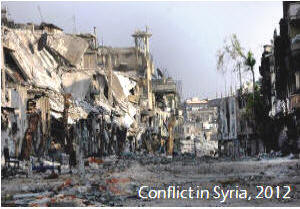
Forces from within a state that tend to divide it … causes of conflicts within a state.
Memory Hint:
centrifugal =
go apart
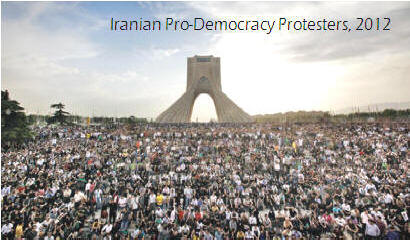 Nationalism is one of the most powerful centripetal forces but it also can be a disruptive centrifugal force. The idea of the nation-state is that states are formed around nations of people. It is a small step from that to the idea that every nation has the right to its own state or territory. Nationalism is one of the most powerful centripetal forces but it also can be a disruptive centrifugal force. The idea of the nation-state is that states are formed around nations of people. It is a small step from that to the idea that every nation has the right to its own state or territory.
A dissident minority that has total or partial secession of the state as its primary goal is said to be guided by
separatism or autonomous nationalism. Canada, for example, has a powerful secessionist movement in French-speaking Quebec … a vote in 1995 just barely lost 51 to 49%.
Separatist movements are expressions of
regionalism, which is minority group identification with a region rather than a state.
Other Examples: religion, language, ethnicity, ideology
Nigeria's Boko Haram Militants (PDF)
A
Simple and Useful Guide to Understanding the Conflict in Iraq
(1:42)
Amnesty International State of the World 2015-2016
Balkanization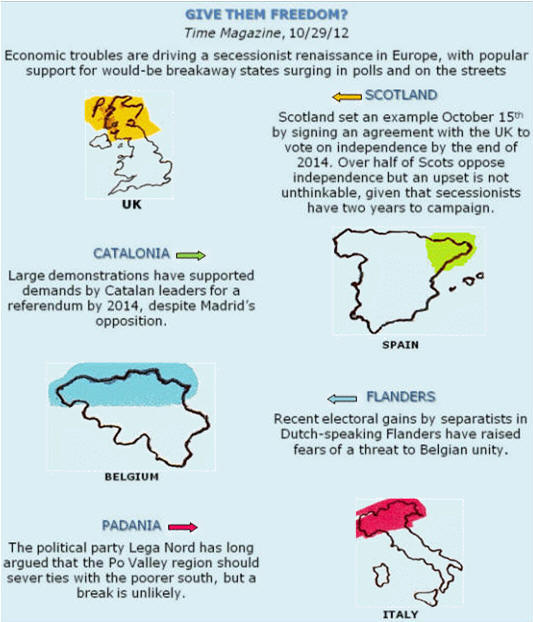
The fragmentation of a region into smaller, often hostile, political units … usually results in a new independent state. The term comes from the Balkan Peninsula of Europe, a region that has balkanized many times and is still undergoing balkanization.
Examples: Yugoslavia, USSR, East Timor
Unsuccessful Attempts: Kashmir, Sri Lanka, Kurdistan
Devolution
The process by which regions within a state demand and gain political strength and growing autonomy at the expense of the central government. Devolutionary pressures result in increased autonomy for a region. (If strong enough, these devolutionary pressures may result in balkanization.)
Examples: US Indian Reservations, Scotland, Chechnya in Russia (changing),
Quebec
Irredentism
A policy of cultural extension and potential political expansion aimed at a national group living in a neighboring country. For example, when India mistreated Muslims living in the states of Jammu and Kashmir, the Muslim government of neighboring Pakistan threatened and ultimately went to war. Irredentism is often a cause of cultural conflicts as countries protect members of their cultural group living in neighboring countries.
Examples: the Marsh Shiites, Armenians in Azerbaijan, Muslims in Kashmir, Serbs in Bosnia, Somalis in Ethiopia
and Kenya, Afghanis in Pakistan
Solutions: relocate borders, resettle population, devolution / autonomy
Ugeria: Heterogeneous Independence

| 